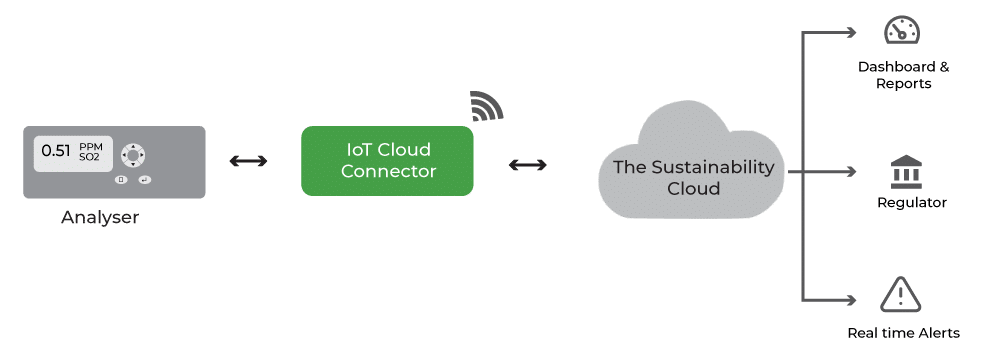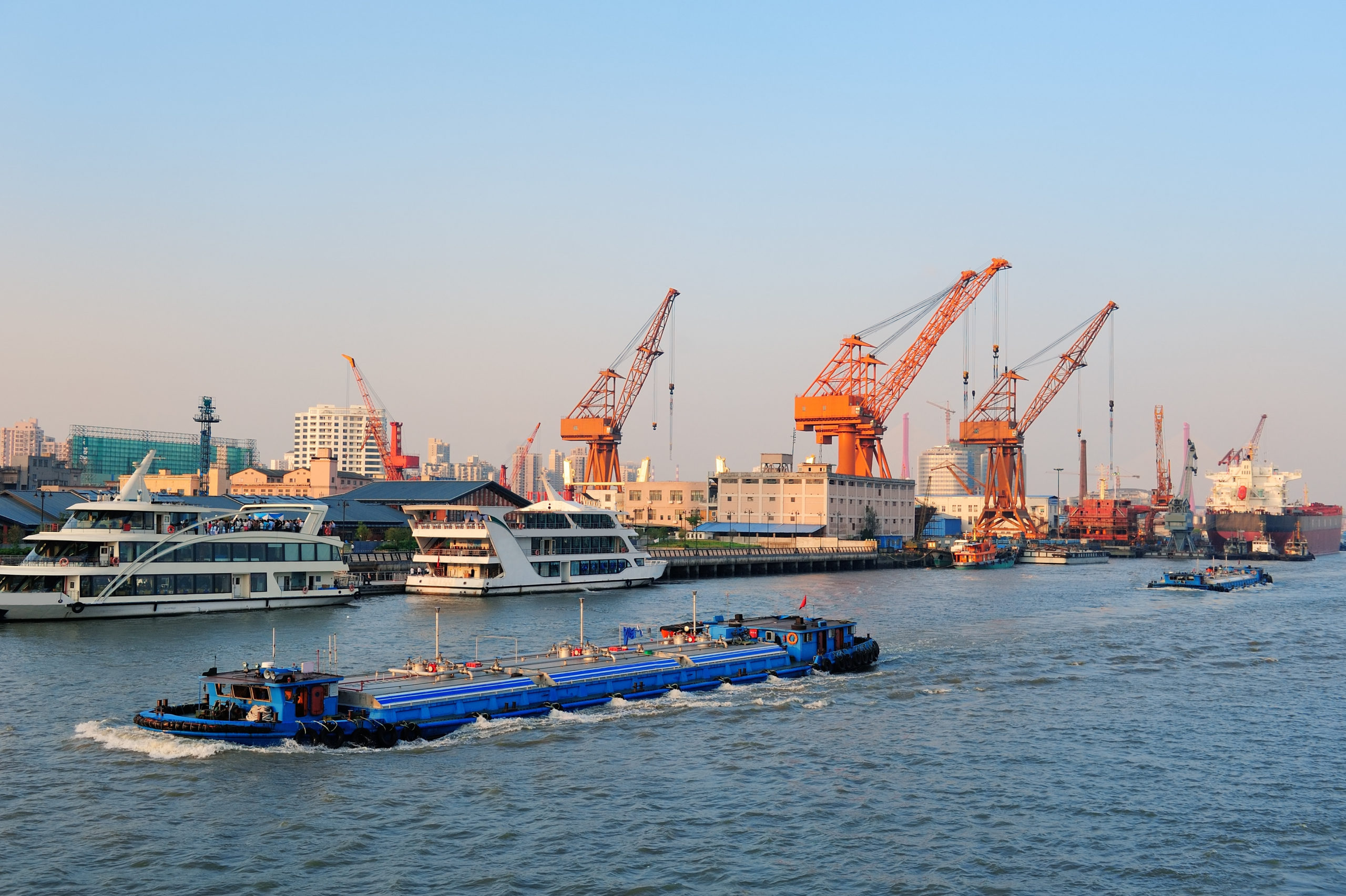CPCB and SPCB Guidelines and CEMS Compliance Requirements for Industries
Central Pollution Control Board (CPCB) directed the State Pollution Control Board (SPCB) and Pollution Control Committees for monitoring of the Air polluting gasses of the 17 categories of highly polluting industries ( pesticides, zinc, copper, aluminium, petrochemicals, the pharmaceutical industry, sugar, tanneries, power plants, iron and steel, cement, oil refineries, fertilizer, chloral alkali plants, dye and dye intermediate units, and pulp and paper).
CEMS Connectivity Steps
For meeting CEMS compliance as per CPCB guidelines for you should be following these steps:
- Check your CTO and CTE regarding the CPCB and SPCB compliance requirements and list of parameters you need to monitor.
- Select your suitable analyser for parameters required as per your CTO for your industry as per the CPCB guidelines ( Page no. 59-72)
- Install the analyser at the locations as per the CPCB direction CPCB guidelines (Page no. 9-12)
- Select a Service provider for the data handling and connectivity with the CPCB / SPCB and other regulatory bodies. Click Here
- The service provider provides the technical and Software support to fetch data from the analyzer and connect it to the regulatory bodies.
- The service provider will help out with documentation and coordination with the CPCB and SPCB.
- After receiving approval from SPCB and CPCB, service provide will integrate the data with the regulatory body.
Understanding Continuous Emission Monitoring Systems (CEMS)
These are the integrated systems (Analyser, Data logger, Vendor software and Regulatory bodies Portals). CEMS acquires the Emissions data from the site and pushes that data to the regulator bodies using the internet and communication protocols. Regulatory authorities often require industries to install CEMS to monitor their emissions and ensure compliance with air quality standards and environmental regulations.

Components of a CEMS
The main components of CEMS are :
- Gas analyzer – These are the main components that measure the concentrations of specific pollutants in the exhaust gas stream. Various types of analyzers are used to detect different pollutants, such as sulfur dioxide (SO2), nitrogen oxides (NOx), carbon monoxide (CO), particulate matter (SPM).
- Data logger – This data handling module ensures collection and processing of the information gathered by the gas analyzers, it usually includes data logging and storage capabilities.
- Communication interfaces -It provides a set of rules, protocols, and standards that govern the format, timing, and sequence of data exchange to ensure seamless and efficient communication between different systems, devices, or software components.
- Data storage and reporting – Reporting of data to the CPCB and State pollution control boards as per their requirements.
CPCB, State Boards and Pollution Control Committees Data Access Portals
| S.No | Regulatory Bodies | CEMS Data Portals |
| 1 | Central Pollution Control Board | https://rtdms.cpcb.gov.in/industry-login |
| 2 | Chhattisgarh Environment Conservation Board, | https://enviscecb.org/Industry_list_CEMS_Stations.htm |
| 3 | Madhya Pradesh Pollution Control Board | https://esc.mp.gov.in/#/publicPortal/categoryList |
| 4 | Rajasthan Pollution Control Board | sso.rajasthan.gov.in/dashboard |
| 5 | Goa State Pollution Control Board, | https://goaspcb.gov.in/ |
| 6 | Karnataka State Pollution Control Board, | https://kspcb.karnataka.gov.in/ |
| 7 | Kerala State Pollution Control Board | https://keralapcb.glensserver.com/keralapcb/graph.html |
| 8 | Delhi Pollution Control Committee | https://dpcccems.nic.in/public |
| 9 | Haryana State Pollution Control Board | http://hspcbcems.nic.in/ |
| 10 | Himachal Pradesh Pollution Control Board | http://hspcbcems.nic.in/public |
| 11 | Punjab Pollution Control Board | http://ppcbcems.nic.in |
| 12 | Andhra Pradesh State Pollution Control Board, | https://aprtpms.ap.gov.in/#/login |
| 13 | Tamil Nadu Pollution Control Board | https://tnpcb.gov.in/ |
| 14 | Telangana State Pollution Control Board | https://tspcb.rtms.telangana.gov.in/ |
| 15 | Bihar State Pollution Control Board | http://bpcbcems.nic.in/public |
| 16 | Jharkhand Pollution Control Board | https://jsac.jharkhand.gov.in/pm10/ |
| 17 | Odisha Pollution Control Board | https://ospcb-rtdas.com/#/login |
| 18 | West Bengal Pollution Control Board | http://emis.wbpcb.gov.in/airquality/ |
| 19 | Uttar Pradesh Pollution Control Board | http://www.uppcb.com/ |
| 20 | Uttarakhand Pollution Control Board | https://ueppcb.uk.gov.in/ |
| 21 | Maharashtra Pollution Control Board | https://onlinecems.ecmpcb.in/#/login |
| 22 | Arunachal Pradesh State Pollution Control Board | https://apspcb.net/ |
| 23 | Assam Pollution Control Board | https://pcbassam.org/ |
| 24 | Manipur Pollution Control Board | – |
| 25 | Meghalaya Pollution Control Board | https://megspcb.gov.in/ |
| 26 | Mizoram Pollution Control Board | https://mpcb.mizoram.gov.in/ |
| 27 | Nagaland Pollution Control Board | https://npcb.nagaland.gov.in/ |
| 28 | Sikkim State Pollution Control Board | https://spcb.sikkim.gov.in/index.html |
| 29 | Tripura Pollution Control Board | https://tspcb.tripura.gov.in/ |
| 30 | Pollution Control Committee, Dadra and Nagar Haveli and Daman and Diu | https://ddd.gov.in/pollution-control-committee/ |
| 31 | Gujarat Pollution Control Board | https://gpcboms.gpcb.gov.in/ |
| 32 | Lakshadweep Pollution Control Committee | – |
| 33 | Chandigarh Pollution Control Committee | https://cpcc.chd.gov.in/ |
| 34 | Jammu & Kashmir State Pollution Control Board | – |
| 35 | Puducherry Pollution Control Committee | https://dste.py.gov.in/ppcc/Index.html |
| 36 | Andaman & Nicobar Islands Pollution Control Committee | https://dstpcc.andaman.gov.in/index_anpcc.php |
Guideline for the Installation and Operation of CEMS as per CPCB and SPCB Analyzer must include the following features:
- As per CPCB and SPCB Guidelines for CEMS measurements should be on a 24/7 basis.
- Concentration of pollutants measured directly and display of measurements in Should be in standards-required units, such as ppm, mg/m3, or volume%.
- Data collection, recording, and reporting via digital communication with a remote computer and analyser should have to support RS232 / RS485 / Ethernet / USB communication ports.
- Analyzer should have to be certified (by internationally recognized organizations as TÜV, MCERTS, or USEPA) in case of made in India analysers, the analyser should have to be working on technologies as per the CPCB guidelines and industry have to submit a letter regarding the analyser working principle.
- Analyser working principle should be as per the CPCB Guidelines for Stack Monitoring.
DATA ACQUISITION, AND REPORTING
- The system should be able to collect data in real time without any assistance from humans.
- Data monthly data availability should be more than 85%
- Data production, data collection, data transfer, and data integration need to be automatic at all server ends.
- Raw data should be transmitted simultaneously to SPCBs /PCCs and CPCB.
- The data supplied electronically must be accessible to the data generator through the internet in order for the industry to take corrective action, if necessary, in the event that incorrect data was submitted.
- The program must include a framework for data validation with clearly defined stakeholder roles, including: Data Generator; SPCBs/PCCs; and CPCB. Auto report and auto mail generation etc.
- Data transfer through Leased Line (1Mbps) and Broadband, with two medias supported that can be used interchangeably for data submission.
- To avoid power failure of Automated Continuous Emissions Monitoring Systems , connect the system to a backup power source with sufficient capacity.
Specific Parameter for industries need to install CEMS
| S.No | Category | Emission Parameters |
| 1 | Aluminum | PM, Fluoride |
| 2 | Cement | PM,NOx,SO2 |
| 3 | Distillery | PM |
| 4 | Chlor Alkali | Cl2, HCl |
| 5 | Fertilizers | PM, HF, Ammonia |
| 6 | Iron & steel | PM,SO2, NOx |
| 7 | Oil refinery | PM,CO,NOx,SO2 |
| 8 | Petro chemical | PM,CO,NOx,SO2 |
| 9 | Power Plants | PM, NOx, SO2 |
| 10 | Thermal Power Plants | PM, NOx, SO2, Total Mercury(Gaseous) |
| 11 | Zinc | PM, SO2 |
| 12 | Copper | PM, SO2 |
| 13 | Boiler | SO2, NOx, PM |
Please check your CTO to check the more details regarding the parameters details.
Continuous Emission Monitoring Systems combine regulatory compliance, operational effectiveness, risk mitigation, and environmental responsibility to provide a comprehensive approach to emissions management. CPCB and SPCB guidelines provide each and every details regarding the compliance requirements.




